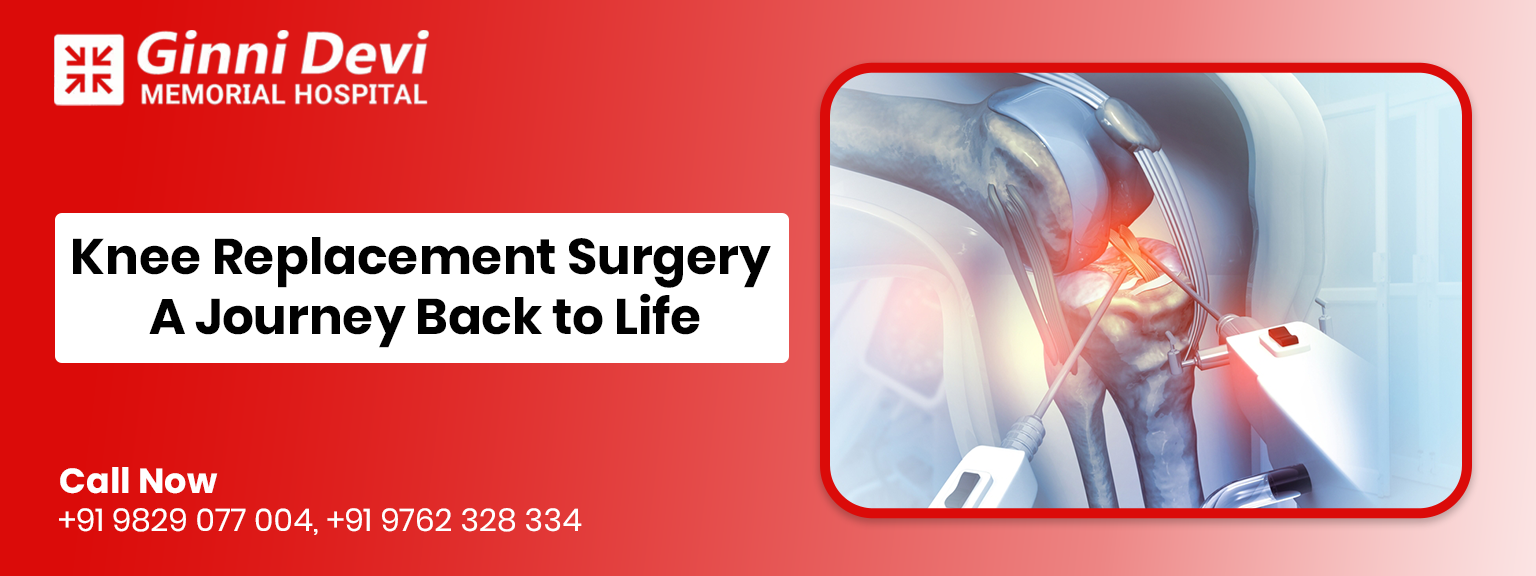Pain is what the body has to say that something is awry, but suffering does not have to be forever.” For tens of thousands of people who endure stiff and painful knees, this line hits a chord every day. When walking becomes a struggle, when even the hint of stairs is daunting, it’s not just the knees that give up; it’s the quality of life. Which is where knee replacement surgery re-emerges, providing hope and motion back to those who’d thought it was gone forever.
What Happens During the Surgery?
A knee replacement surgery is a procedure where the damaged knee joint is replaced by a prosthetic implant, made of metal or plastic, which is similar to a normal joint. It is indicated for arthritis or serious cartilage deterioration that causes pain, stiffness, and inflammation. Surgery diminishes pain, stabilises the movements, and brings patients up for an active life, not depending on someone else, and a better quality.
How the Procedure is Performed
- The operation adheres to a clearly defined course:
- Pre-surgery tests: Blood tests, X-rays, and scans are performed to prepare.
- Anaesthesia: General or spinal anaesthesia is administered.
- Operation: Damaged bone and cartilage are cut away, and new artificial parts are inserted.
- After care: The incision is sutured and bandaged.
- Recovery: Patients are kept in check and encouraged to move their legs early to heal quickly.
This is how knee replacement surgery is performed.
Types of Knee Replacement Surgery
Surgeons do not perform the same type of operation on all of their patients. Physicians select the best method based on the severity of the joint damage and the health of the patient.
- Total Knee Replacement (TKR): You get the whole joint surface changed. It is a same-day, most common procedure to get relief for a long time.
- Partial Knee Replacement (PKR): In this, only the injured portion of the knee is replaced, keeping the unaffected areas intact. Recovery is often quicker.
- Revision Surgery: Carried out if there is a problem with the old implant.
- Minimally Invasive Surgery: Smaller incisions may mean less scarring and quicker recovery time.
Who Needs the Surgery?
The majority of patients tend to be recommended for knee replacement surgery if they:
- Suffer from a constant pain that is affecting the ability to perform daily activities.
- Suffer from rigidity and swelling even when you’re on medication or going through physical therapy.
- Struggle to walk even short distances.
- Have moderate to severe arthritis as seen on X-rays.
Surgeries are mostly for older adults, but younger patients with serious injuries may require the operation, too.
Benefits of knee replacement surgery
The main benefit is long-term pain relief. But there are other benefits, too:
- More flexibility to walk and move without pain.
- Better sleep and quality of life.
- Returning to things like light sports, travel, or hobbies.
- High Success with Implants that will last 15- 20 years in the majority of individuals.
Surgery can feel like a new beginning for many folks who’ve suffered for years from extreme restriction.
Risks and Possible Complications
Knee replacement surgery is safe, mostly due to advancements that have been made over time, but there are still risks when it comes to any major operation. These may include:
- Surgical infection at the operative site
- Blood clots in leg deep veins, which may break loose and travel to the lungs.
- The implant becomes loose or worn with time
- Damage to a nerve or blood vessel at the time of surgery
- Persistent stiffness in rare cases
Thankfully, though, most of these risks are cautiously reduced with preventative procedures, prompt medications, and systematically planned rehab programs with the supervision of a professional like at Ginni Devi Memorial Hospital who has Best Knee Replacement Surgeon in Jaipur ensures not just treatment but a trusted journey back to mobility and independence.
Recovery and Rehabilitation
The recovery is a long one, and it will require patience:
- Week 1: Patients are assisted with walking and guided by physiotherapists.
- First month: The swelling decreases, but you start to gain strength from doing exercises.
- Three months later: Most people resume normal daily activities, such as driving and light physical work.
Final thoughts
Knee replacement surgery isn’t just about fixing joints — it’s about reclaiming life. “Why crawl through pain when you can walk into freedom. Specialised care is being provided to patients at the Orthopedic Hospital in Jaipur – Ginni Devi Memorial Hospital, guiding them towards comfort, movement, and the joy of staying active, making the painful steps kinetic and confident once again.




